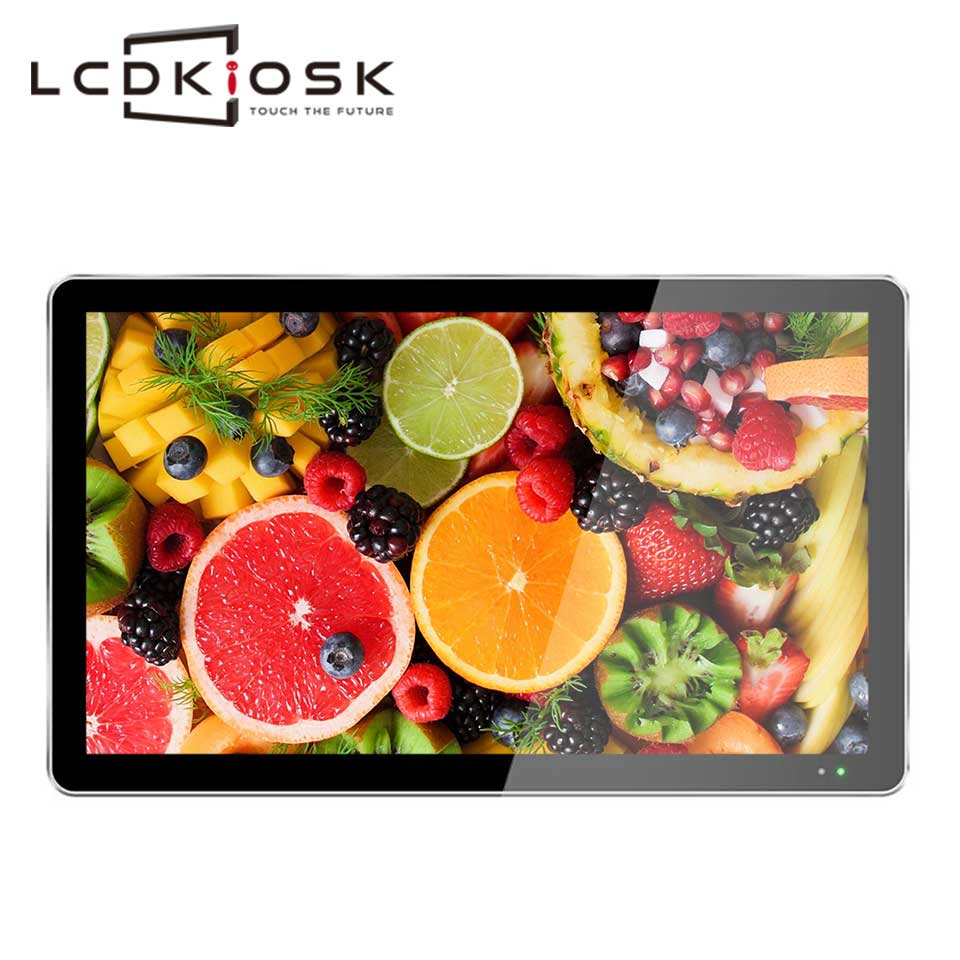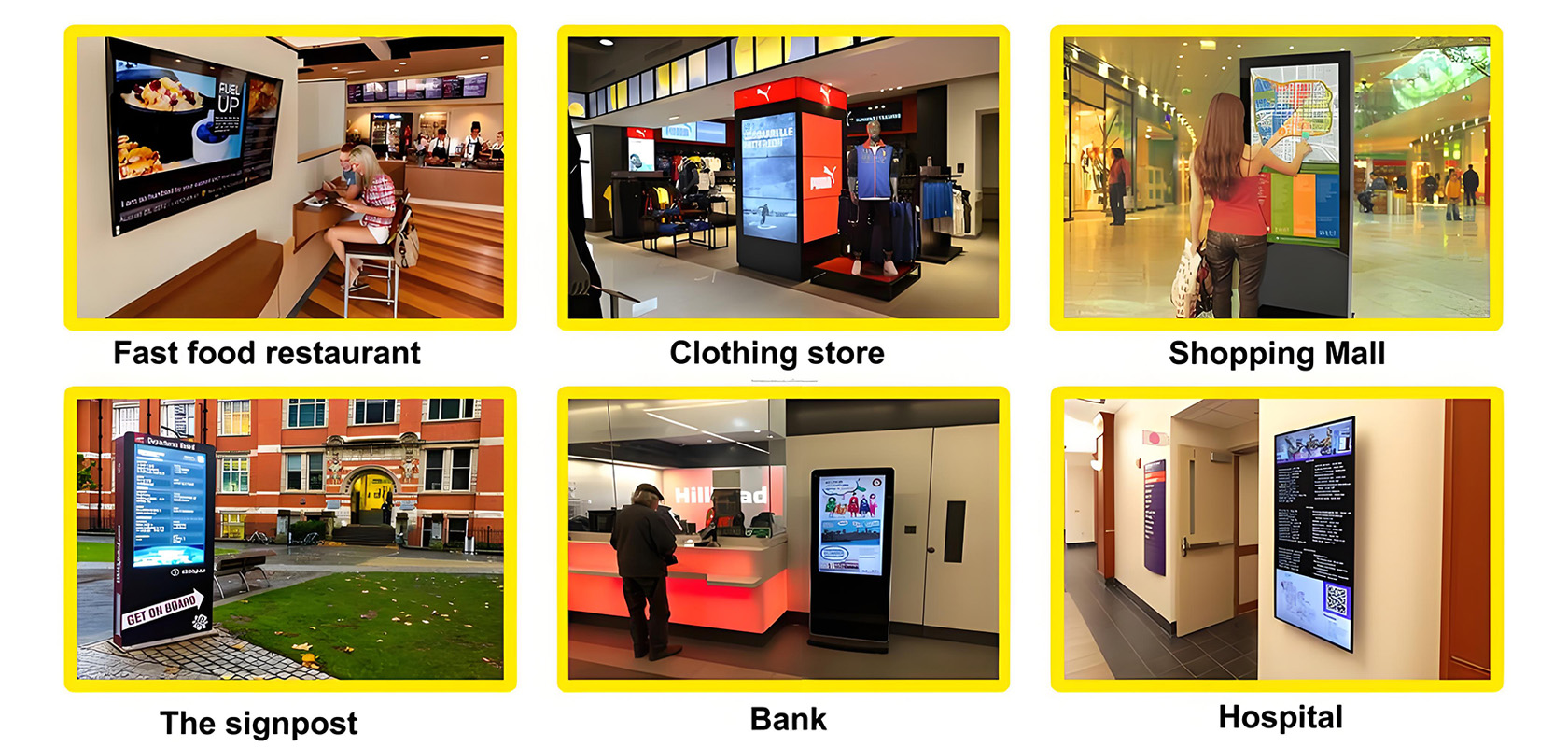
H2: What is an LCD Touch Screen Kiosk?
H2: Why LCD Touch Screen Kiosks Are Gaining Popularity
H2: High-Resolution Displays
H2: Touch Interaction Technology
H3: Capacitive vs. Resistive Touchscreens
H3: Multi-Touch Capabilities
H2: Customizable Interface
H3: Branding and Design Flexibility
H2: Enhanced Customer Experience
H2: Cost-Efficiency
H2: 24/7 Operation
H3: Reduced Labor Costs
H2: Contactless Interaction
H2: Retail and Shopping Malls
H2: Hospitality Industry
H2: Healthcare and Medical Facilities
H2: Transportation Hubs and Airports
H2: Self-Service Options
H2: Interactive Product Displays
H3: Personalized Recommendations
H2: Real-Time Updates and Information
H2: Size and Resolution Considerations
H2: Software and Hardware Compatibility
H2: Durability and Maintenance
H2: Security Features
H2: Integration with Artificial Intelligence
H2: Voice Control Capabilities
H2: Sustainability and Eco-Friendly Design
H2: Why LCD Touch Screen Kiosks Are Here to Stay
H3: What are the key advantages of using LCD touch screen kiosks in businesses?
H3: Can LCD touch screen kiosks be used outdoors?
H3: Are LCD touch screen kiosks customizable?
H3: How secure are LCD touch screen kiosks in terms of data privacy?
H3: What is the cost range for installing an LCD touch screen kiosk?
In today's fast-paced world, businesses are constantly looking for innovative ways to enhance customer experience and streamline services. Enter the LCD touch screen kiosk, a sleek and modern solution designed to do just that. These kiosks have quickly become a staple in industries ranging from retail to healthcare, providing self-service options that improve efficiency and engagement. But what exactly makes these kiosks so effective, and why are they gaining such widespread popularity?
An LCD touch screen kiosk is an interactive, self-service station that uses an LCD (Liquid Crystal Display) screen and a touch-sensitive surface. These kiosks allow customers or users to interact with the device by simply tapping, swiping, or pressing on the screen. They're commonly used in places like airports, shopping malls, hospitals, and restaurants to provide information, allow for self-check-ins, place orders, or process transactions.

One of the biggest reasons for the rise in popularity of LCD touch screen kiosks is the demand for contactless interactions. As consumers seek more convenient, personalized, and hygienic experiences, businesses have been quick to adapt by implementing self-service kiosks. These devices not only reduce the need for human interaction but also streamline processes, allowing customers to quickly and easily access the services they need.
The success of LCD touch screen kiosks can be attributed to their array of advanced features that make them functional and engaging. These features enhance user interaction and provide businesses with a powerful tool to improve their service offerings.
One of the standout features of modern LCD touch screen kiosks is their high-resolution displays. These displays offer crisp, clear visuals, making them perfect for showcasing products, services, or information. Whether it's a product catalog or a digital menu, the vivid colors and sharp text on these screens ensure a better user experience.
Gone are the days of traditional button-operated machines. LCD touch screen kiosks use touch interaction technology, allowing users to interact directly with the screen. This intuitive, user-friendly approach helps people of all ages feel comfortable using the system, which is essential for businesses that aim to serve a wide variety of customers.
There are two primary types of touch technology used in kiosks: capacitive and resistive. Capacitive touchscreens are more common in modern kiosks and offer better sensitivity, durability, and multi-touch functionality. Resistive screens, on the other hand, are cheaper but tend to be less responsive and durable. The choice between the two depends on the type of usage the kiosk will experience.
Multi-touch capabilities are another key feature of LCD touch screen kiosks. This technology allows users to interact with the screen using multiple fingers at once, making tasks like zooming in on a map or rotating images more seamless. It enhances user interaction and opens up new possibilities for creating engaging and interactive experiences.
Businesses can fully customize the user interface (UI) of an LCD touch screen kiosk to reflect their brand's identity. From colors to logos to the layout of the buttons, the interface can be designed to meet the specific needs of the business and create a consistent brand experience for customers.
The design flexibility offered by LCD touch screen kiosks allows businesses to align the device with their existing marketing strategies. Customizing the UI ensures that the kiosk doesn’t just serve as a tool for self-service, but also as a marketing asset, helping to build brand awareness and drive customer loyalty.
Businesses and consumers alike stand to benefit from the widespread adoption of LCD touch screen kiosks. These devices offer a range of advantages that make them a worthwhile investment.
With LCD touch screen kiosks, customers can enjoy a more interactive and engaging experience. Instead of waiting in line or seeking assistance from a staff member, they can independently browse information, place orders, and complete transactions at their own pace. This level of autonomy is often appreciated, especially in busy environments.
For businesses, LCD touch screen kiosks can significantly reduce labor costs. By automating tasks that would normally require staff assistance, companies can allocate their resources more effectively. Additionally, kiosks can operate 24/7, ensuring that businesses continue to provide services even after hours without requiring additional human resources.
One of the primary advantages of LCD touch screen kiosks is their ability to operate continuously. Whether it's in a retail store, an airport, or a hospital, these kiosks can provide services around the clock. This makes them a valuable tool for industries that need to cater to customers at all hours, without the need for constant staffing.
Since kiosks handle many tasks traditionally performed by employees, businesses can reduce their reliance on human staff, cutting labor costs. For example, in a fast-food restaurant, a self-ordering kiosk can take orders, reducing the need for cashiers and allowing staff to focus on other important tasks.
In a world that increasingly values hygiene and social distancing, LCD touch screen kiosks offer a contactless solution. Customers can complete their transactions or obtain information without touching anything other than the screen. This reduces the spread of germs and provides a safer experience for both customers and staff.
Many industries have adopted LCD touch screen kiosks due to their ability to improve customer service and operational efficiency. Let's take a look at some of the sectors where these kiosks are making a significant impact.
In retail, LCD touch screen kiosks are commonly used for self-checkouts, digital product displays, and interactive directories. Shoppers can browse product catalogs, check out prices, and even place orders from kiosks, enhancing their in-store experience.
In hotels, kiosks are used for self-check-in, room service ordering, and providing guests with information about local attractions or amenities. By allowing guests to check in independently, hotels can speed up the check-in process and reduce wait times.
Hospitals and clinics use kiosks for patient check-in and to provide vital information on services, wait times, or directions. By allowing patients to handle some tasks on their own, medical facilities can improve efficiency and reduce the burden on staff.
Airports and train stations use LCD touch screen kiosks for self-check-in, ticketing, and providing passengers with real-time flight or train information. These kiosks help streamline the travel process, making it easier for passengers to navigate busy terminals.
LCD touch screen kiosks provide businesses with a unique way to engage customers by offering a range of interactive features and services.
One of the most significant benefits of kiosks is that they provide customers with self-service options. Whether it's checking into a flight or ordering food, customers appreciate the convenience and independence that kiosks provide.
Kiosks allow businesses to display their products interactively. Customers can explore product features, view videos, and even receive personalized recommendations. This level of interaction can boost sales by providing customers with the information they need to make informed purchasing decisions.
Many kiosks incorporate algorithms that provide personalized recommendations based on user behavior or preferences. For instance, a kiosk in a clothing store might suggest items that complement a user's previous choices, creating a more personalized shopping experience.
Kiosks also provide real-time updates on various services, such as wait times, available products, and special offers. This helps customers stay informed and make decisions on the spot, improving their overall experience.
When investing in an LCD touch screen kiosk, businesses must consider various factors to ensure they select the best solution for their needs.
The size of the kiosk's display is crucial. Larger screens are better for showcasing detailed content, while smaller screens may be more suitable for quick tasks. Resolution is also important to ensure clear visuals, especially for kiosks that display images or videos.
The kiosk's software must be compatible with the business's existing systems. Whether it's a point-of-sale system or a customer database, ensuring smooth integration is key to the kiosk's effectiveness.
Since kiosks are often used in high-traffic environments, they need to be durable and easy to maintain. Businesses should choose kiosks that are built to withstand wear and tear while also offering straightforward maintenance options.
Security is a major concern for any business implementing kiosks, especially when dealing with sensitive customer data. Look for kiosks with built-in security features such as encryption, anti-tampering measures, and secure payment processing.
As technology continues to evolve, so too will the capabilities of LCD touch screen kiosks. Here are some future trends to watch for.
AI-powered kiosks can provide even more personalized experiences by using customer data to predict preferences, offer customized recommendations, and improve interactions.
Incorporating voice control into kiosks will make them more accessible and allow for hands-free interaction. This trend is especially important for people with disabilities or those looking for a more convenient way to interact.
As businesses and consumers become more environmentally conscious, kiosks are likely to become more eco-friendly. This includes the use of sustainable materials, energy-efficient designs, and systems that reduce waste.
LCD touch screen kiosks are undoubtedly transforming the way businesses interact with customers. With their ability to provide efficient, personalized, and contactless experiences, they are revolutionizing industries across the globe. Whether in retail, hospitality, healthcare, or transportation, these kiosks are here to stay, offering a level of service that benefits both businesses and customers alike.
LCD touch screen kiosks offer enhanced customer service, cost savings, 24/7 availability, and the ability to reduce human interaction, especially in a post-pandemic world.
Yes, there are specialized outdoor kiosks that are designed to withstand weather conditions, such as rain and direct sunlight.
Absolutely! Businesses can tailor the interface, design, and functionality of kiosks to match their specific needs and branding.
Modern kiosks come with advanced security features, including encryption and secure payment processing, to ensure data privacy and protection.
The cost can vary depending on factors like the size of the kiosk, customization options, and the technology used. Generally, prices range from a few thousand dollars to tens of thousands of dollars.
We are a manufacturer of LCD touch screen kiosks located in Shenzhen, China. Please feel free to inquire about the price of LCD touch screen kiosks.
Current article link: https://www.lcdkiosk.com/news/1369.html

Tel
